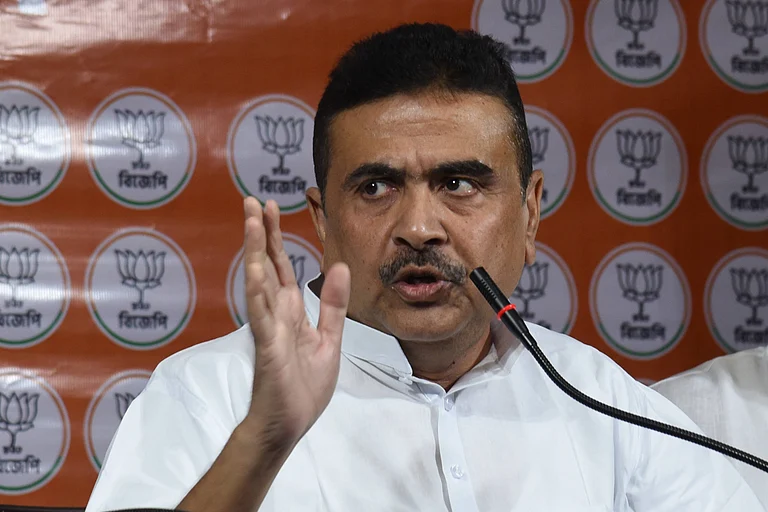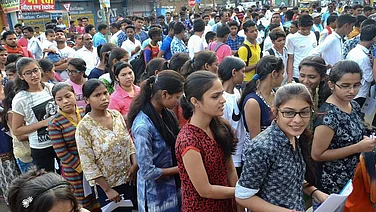India has witnessed a new paradigm shift in its culture of education with the first National Education Policy (NEP) released in 2020 after 34 years. This policy launched by Union minister Dr Ramesh Pokhriyal is aimed at paving the way for transformational reforms in school and higher education systems to make India a global knowledge superpower. The policy has seen an unprecedented allocation of 6 per cent of the GDP towards education, promoting multiple stakeholders’ investments and good governance.
India has the world’s second-largest school system after China (WENR, 2018)m with more than 1.5 million schools and about 260 million students. However, dropout rates in secondary school are still alarming, besides various other challenges like unfavourable student-teacher ratios, inadequate teachers’ training, increasing and widespread distrust with government schools, mushrooming of un-regulated or unlicensed private schools, and mediocre learning outcomes. The NEP aspires to address these gaps through recommendations for enhanced focus on skill development of students, capacity building of teachers, multidisciplinary and interdisciplinary teaching and learning approach. Given the recent restructuring of school education as per the NEP, holistic assessment of school education is a necessity to ensure that school students are equipped to transition into higher education.
Likewise, transformation of higher education in India requires a perfect blend of ‘Glocal’ approach—global standards with local approach. One of the biggest drawbacks in India today is that only a few degree programmes equip students with employable skills. Emerging challenges such as building resilience to climate change, pandemics and disruptive technologies shall require a workforce able to draw on cross-cutting competencies in the country. Thus, multi-disciplinary learning, state-of-the-art research, flexible degree programmes and vocational training enhancements are some of the biggest change makers to develop a highly skilled and market-ready workforce.
In a globalised world, research in medical sciences may require input from engineering inputs or computer science students may refer to linguistics. The NEP proposes to integrate the humanities and arts with science, technology, engineering and mathematics (STEM) in undergraduate education. The NEP also promotes HEIs to focus on creating a better research ecosystem with the support of a new National Research Foundation for catalysing quality academic research in all fields of study. This would enhance creativity, innovation, critical thinking, problem-solving abilities, teamwork, and communication skills among students and faculty.
Path towards Excellence
It is evident that the majority of Indian institutions have remained almost constant in the position attained in the World University Rankings every year in the last decade. It is also owed that this situation is because of better performance from Asian countries of China, South Korea, Japan, Taiwan, Hong Kong, and Singapore, which are offering a better quality of education, research and focus on internationalisation. It is a well-known fact that the idea of internationalisation of higher education is based on the mobility of students, faculty members, programmes, and institutions across countries; however, in India, this has been a one-way path. Every year more than 500,000 students have been going abroad, while only around 40,000 international students, mostly from South Asian countries, have been enrolling in India HEIs in the last three years.
The quality of research in Indian HEIs is considered below-par, contributing a large number of low-quality research publications scoring just 0.42 for 5 in quality of research in the World Economic Forum Index (WEF, 2018). The NEP exclusively lays stress on establishing stronger research institutions and promoting Research and Development (R&D) at the university, state, and national levels. NEP focuses on research and innovation through start-up incubation centres, technology development centres, greater industry-academic linkages, and interdisciplinary research. National Research Foundation (NRF) will promote and expand research and innovation by providing funding to HEIs. This will put R&D on a path of long-term sustainability and rapid growth, thereby broadening the existing research horizons and filling the existing gaps.
The NEP also aims to attract top 100 QS World Ranking universities to open offshore campuses in India. International universities will bring knowledge, technology, and innovative pedagogy of international standards; thus, setting a new bench of quality education. Moreover, this development will also inspire Indian HEIs to improve their standards, leading to the holistic development of education in India.
Consequently, this will reduce the number of Indian students who would go abroad for higher education because of access to international quality education at a lower cost. The focus of NEP also lies in reforming training of faculty through workshops, training courses, and online faculty development modules which would improve their skills and professional knowledge.
It is an established fact that rankings and ratings have become a significant part of the higher education landscape. They play a crucial role in shaping the perceptions of current and potential students, faculty, parents, employers, and decision-making authorities. In the last decade, concrete efforts from government and private agencies to strengthen rankings and ratings have encouraged institutions to achieve world class status. While there are adequate resources to assess and benchmark HEIs, there is a lacuna for the same in the school education domain. Schooling should also result in quantifiable learning outcomes to ensure the system is geared towards all-inclusive learning.
Effective implementation of the NEP will lead to creation of vibrant knowledge hub, based on the principles of access, affordability, accountability, equity and quality, providing an inclusive platform for its citizens to learn, contribute and grow, thereby not only diversifying India’s global image but also making the education system at par with the best in the world.
(This appeared in the print edition as "Brave New World")
ALSO READ
Dr Karthick Sridhar, Vice Chairman, ICARE


























